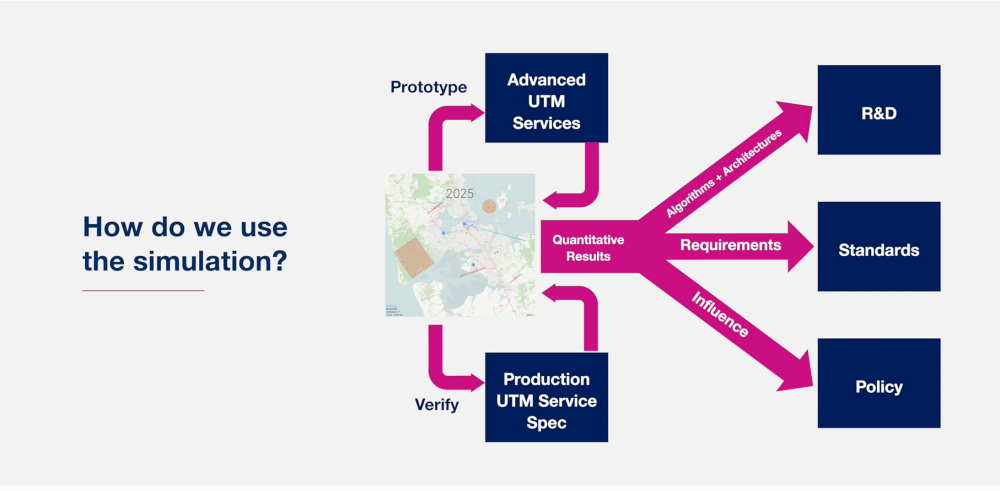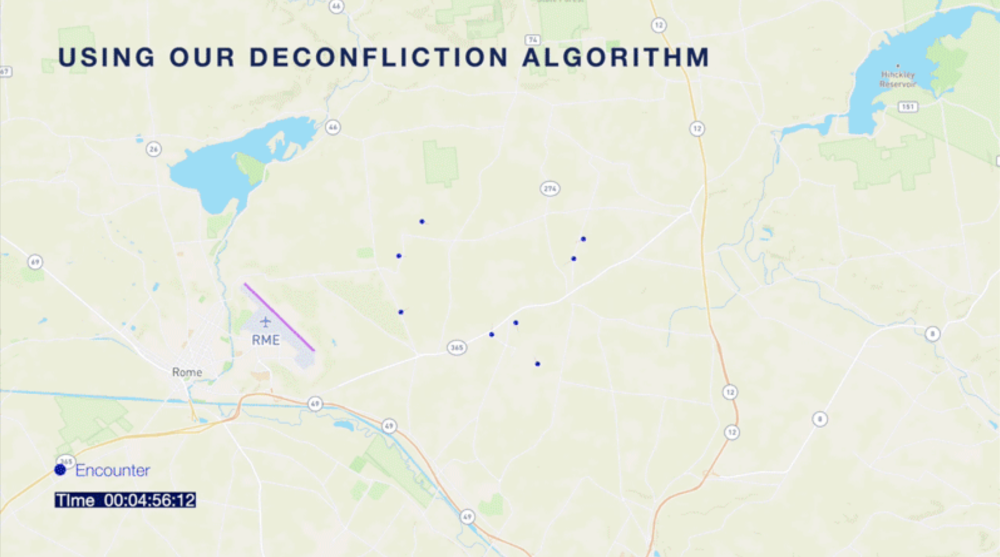At Airbus UTM, we use our unique simulation tool to explore and evaluate concepts, services, and architectures that will serve as critical foundation pieces of a robust and future proof UTM framework.
The Prototype Environment
One of the first efforts kicked-off within Altiscope, the Acubed project that became Airbus UTM, was the development of a dynamic simulation tool the team called “The Prototype.” In those early stages, the Prototype was designed to explore ideas about the basic requirements of UTM: concepts like fairness and deconfliction, which the UTM community was still defining at the time. Since then, the tool has gone through many evolutions to become the powerful system we use to answer critical questions about how UTM solutions will function in increasingly autonomous and digitized airspace.
Today, the Prototype is a distributed, service-based system that can simulate everything from the physics of an aircraft to the wide variety of factors that impact flight: like weather, infrastructure, and other nearby vehicles. Layered over this is a component that simulates the UTM system itself: allowing configuration for an almost infinite variety of operator and mission scenarios along with the UTM services that enable those operators to take to the skies.
This simulation framework allows us to get a big picture view of the airspace from the perspective of many different stakeholders: small drone operators, urban air mobility vehicles, commercial air traffic, and air traffic control. The environment provides data at scale: running thousands of test flights representing those stakeholders in the real world is impractical. The Prototype, using the Airbus UTM cloud platform, can simulate hundreds of thousands of flight hours in under a day, identifying anomalies and providing reliable and reproducible results.
Developing Sustainable Solutions
More specifically, we use the Prototype to develop a set of sustainable and forward-looking safety critical tools and services to support advanced concepts like urban air mobility, wide scale drone delivery in urban areas, or automated flight beyond visual line of sight (BVLOS). The simulation environment allows researchers to explore these advanced concepts in an astoundingly complex future environment: one that may include not only high volumes of traffic, but also new regulatory requirements and policies that have yet to be enacted.
UTM concepts like deconfliction, for example, are complex problems that become even more critical in dense airspace. Simulation can allow researchers to develop and test deconfliction strategies that move beyond pairwise deconfliction and consider the problem of maintaining efficient flight paths while avoiding conflicts from multiple directions at once.
We also use simulation to explore interoperability, by considering the effects of having many operators and USS stakeholders in the system, each with their own business interests and each attempting to optimize their operations in shared airspace. Through this understanding, we explore concepts of fairness: What happens when one operator reserves a disproportionately large amount of airspace? How is priority negotiated?
The Airbus UTM tools and simulation environment are at work for the entire aerospace industry, providing valuable data to inform industry standards and gain a global consensus on what the airspace of the future will look like. Our publicly-available Drone Volume Estimation tool, which provides an estimate on the number of drones a region might see in a particular area given economics and other factors, have been used worldwide to inform regulators. Data from the drone volume estimation can be used in the simulator to see exactly how that estimated scenario functions. Tools like the volume estimator describe the “what”: the simulation environment leads to the discovery of “how.”
We’re developing ideas and models that have been vigorously stress-tested and capture not only the data points we find, but the uncertainty uncovered in a dynamic airspace. At Airbus UTM, we are committed to making our research and algorithms available to the community, to enable the development of traffic management systems that will support the whole airspace ecosystem.
Source: Press Release


